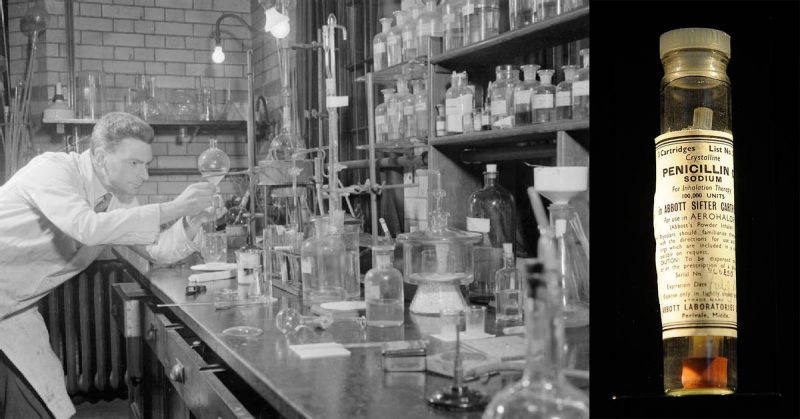Almost 75 years ago, US academic, commercial, nonprofit, and government institutions worked together to provide penicillin to troops serving in World War II. It was known at the time that infections kill more soldiers in war than weapons. The group worked to take the British discovery and turn it into a critical contribution to the war and an ongoing legacy of healing long after.
The story of Alexander Fleming discovering penicillin in 1928 is well-known. He had accidentally contaminated his disease-causing cultures with Penicillium mold and killed them off.
It took until 1940 before Howard Florey and his Oxford colleagues were able to discover penicillin’s use as a therapeutic drug. It was difficult, still, to purify the drug and harder still to produce sufficient quantities to study. By this time, Britain was under siege by the Germans, so Florey and a colleague traveled to the US in 1941 to help out.
They went to the Department of Agriculture’s Northern Regional Research Laboratory (NRRL) in Illinois. That organization had done significant work in fermentation. They contacted other organizations to gain support. The Office of Scientific Research and Development (OSRD) became the clearing house for information being created by the researchers. Organizations in the US and Britain shared data with each other. Soon the NRRL had come out with several improvements to the production process which increased penicillin yield 100-fold.
In September 1942, the NRRL director went to the FDA to see about testing the antibacterial effectiveness of penicillin. A year later, there was enough penicillin to confirm its effectiveness in 200 patients and the drug was ready to go to war. The OSRD asked the FDA to certify every lot produced by the six different manufacturers. Six FDA technicians monitored the output of the manufacturers. Penicillin was so rare at this time that the manufacturers always reconditioned the rejected lots rather than destroying them.
By the time the war ended, some companies had increased the purity of penicillin from the 1% of the original Oxford test group to 85%. They made the drug more potent, but also more abundant, increasing production by a factor of 500. By 1945, the drug was so prevalent, the restrictions on it were dropped, and it was made available to use by civilians. It became cheaper to produce penicillin than to produce the glass bottles it was stored in. The Penicillin Amendment of 1945 made law the FDA’s obligation to test all batches of penicillin and most other antibiotics drugs. The FDA maintained that duty for 40 years until the industry’s record of production showed that FDA oversight was no longer needed, FDA Voice reported.
It all began with an international effort to produce a lifesaving drug for the military. It brought together scientific and medical institutions on a scale not seen to that point. The FDA played a small but important role in supporting our troops in the war.
